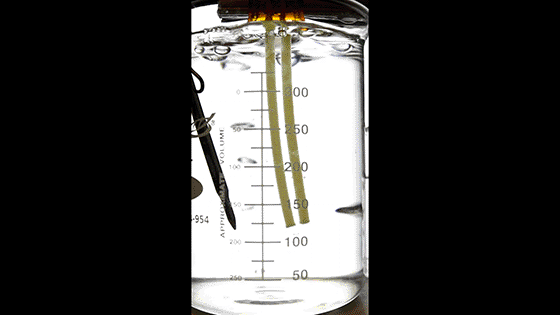Enjoy Better-Cooked Pasta Thanks to Physics and a Ruler
New experiment showcases the science of spaghetti
Multitudes of amateur chefs will soon enjoy perfect al dente pasta and cleaner kitchen walls, as new research shows how measurements with a ruler—not the mythologized throwing against the nearest vertical surface—may be the best way to confirm when pasta is fully cooked.
At the 2022 APS March Meeting, University of Illinois Urbana-Champaign student researcher Jonghyun Hwang will present new fundamental physical principles and conclusions, using a ruler to measure the stiction distance between two vertically hanging pasta to gauge their cooking status.
During a press conference at 9:00 a.m. CDT on Tuesday, March 15, 2022, the collaborators will discuss their results. The conference will be held onsite and streamed via Zoom.
They describe several aspects of pasta noodle physics as a function of cooking in a new preprint. To explore science al dente, the study builds up systematic experiments and simple theory to first cover swelling, then modulus changes, and finally elastocapillarity as a method to gauge the stiffness and hence the cooked texture.
The researchers theoretically and experimentally investigate the swelling and softening of pasta due to liquid imbibition, as well as the elastic deformation and adhesion of pasta due to capillary force. As water diffuses into the pasta during cooking, it softens gradually from the outside inward as starch swells.
Elastocapillarity and Swelling of Cooked Pasta
12:18 p.m. - 12:30 p.m. CDT, Monday, March 14, 2021
Contact: Jonghyun Hwang, University of Illinois Urbana-Champaign
Abstract | Preprint | UIUC Press Release

CREDIT: Jonghyun Hwang, Jonghyun Ha, Sameh Tawfick
Two spaghetti noodles sticking to each other. They are cooked for 12 minutes at 100 degrees Celsius. Noodles detach as they are submerged back.
